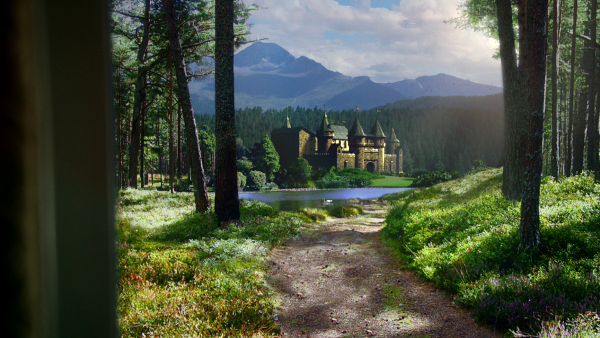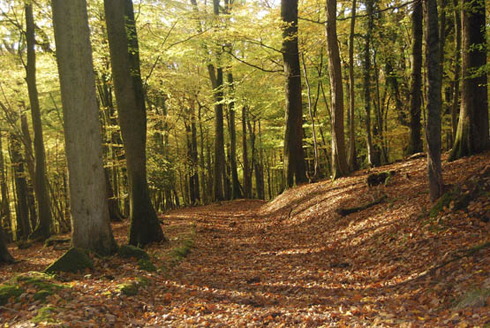Whitehawk/Reflection

Contents
Background
On April the 21st of the 1006th year after the Reckoning, I hereby declare that for excellence in long-term service and loyalty to House Grayson and his sworn oaths, Sir Silas Mercier shall now be known as
Baron Silas Whitehawk
He is elevated to peerage on this day, and in the coming days a track of land shall be granted to him for the new Barony of Whitehawk out of Grayson held lands.
Prince Ainsley Grayson Voice of House Grayson
House Whitehawk is the newest barony created under House Riven, granted to Sir Silas Mercier after his family's fealty break with House Grayson following a small scandal involving a proposed alcohol ban and exchanged insults. Silas is a knight sworn to Grayson, thus remained with them and was consequently rewarded for his loyalty. As a result, most Whitehawks are former Merciers who have pledged their fealty to their kinsman and House Grayson, opposed to following the family to the Lyceum.
The area is characterized by more than 110 square kilometres (42.5 sq mi) of mixed woodland, one of the surviving ancient woodlands in Arvum. Traditionally the main sources of work have been farming and forestry – including charcoal production – iron working and coal mining.
Until the reign of Queen Alarice the Great, the forest was mostly unpopulated. However, in the late 600's, several small villages were established for development of local iron-ore deposits and coal production. The villages were populated with settlers from the lands further north and Twainfort and many of them still exist. The forest was declared a hunting reserve in 816 AR to protect the animal population. In 1006 AR it officially became the Barony of Whitehawk, home to Hawkhold.
Ecology
The Whitewood is composed of deciduous and evergreen trees. Predominant is oak, both pedunculate and sessile. Beech is common and sweet chestnut has grown there for many centuries. The forest is home to foxgloves and other wild flowers. A number of fallow deer in the central area are melanistic. Small numbers of roe deer and muntjac deer have spread in from the east.
The forest is known for its birds; pied flycatchers, redstarts, wood warblers and hawfinches can be found. It supports one of the realm's largest concentration of goshawks. Peregrine falcons can be seen from the viewpoint at Lone Pine Rock. Orange ducks, which nest in the trees, and reed warblers can be seen at Rosetta Ponds and Rosetta Brook, running from the ponds through Coldwell, is famed for its dippers.
Butterflies of note are the small pearl-bordered fritillary, wood white and the white admiral. Klamath Knoll is famed for its glow-worms and Green Lake for its dragonflies.
Villages and Landmarks
- Bridgend
- Coldwell
- Fern
- Green Lake
- Haven
- Jarren's Outpost
- Klamath Knoll
- Lone Pine Rock
- Oar's Rest
- Sylvanmound
- Rosetta Ponds and Brook
- White Mountain River
- White Mountain Peak/White Mountain Range
- The Whitewood
Culture
Holidays
Festival of Butterflies / Spring Festival (March 21st): A festival to celebrate the beginning of spring. Villagers typically buy or make new clothes for the festival. They bring out their finest silver plates and decorate their table spaces with vases full of fruit and colorful flowers. They decorate the doors and windows with garlands of wildflowers and river lilies. The outside celebrations are typically centered on Klamath Knoll and attendees may ride a river boat, get their faces painted, attend storytelling sessions told by village elders and witness a caterpillar float (moved via wagon). Picnics are common during the day.
Day / Night of the Departed (varies): The Day and Night of the Departed is a solemn two day holiday celebrated just before the first full moon of summer. It focuses on gatherings of family and friends to pray for and remember friends and family members who fell defending the village. Each family celebrates it differently, but traditions connected with the holiday include building private altars, honoring the deceased using candles, river lilies, and the favorite foods and beverages of the departed, and visiting graves. Villagers use the occasion to reunite with family and community, and residents of surrounding villages are often invited to attend the great feast held on the last night.
Chestnut Festival / Harvest Festival (September 21st): The biggest celebration of the fall season at Hawkhold and the surrounding villages. After performing a rite honoring Petrichor, the villagers celebrate the harvest of their chestnut groves in the most delicious and fun way: by showcasing a variety of foods made from their own chestnuts. The children play lawn games while overlooking the beautiful fall foliage on Green Lake. A local variety of amber beer which uses chestnuts is also served, known for its very light head and bitter taste.
Feast of the New Dawn (December 31st - January 1st): A celebration wherein the whole village feasts throughout the night of the last day of the year and into the morning of the first day of the new year. Red flowers at the altar/preaching area, and red flowering plants such as geraniums and green branches (typically birch) around shrines are typical decorations: these are believed to symbolize the renewal of life. Doves are released at the first light of dawn to herald the coming of the new year. Similarly, a large dove sculpture would be, and in some places still is, cut from wood, painted, and decorated with flowers.
Economy
Unlike House Riven, whose trade is heavily derived from the Twin Rivers, the economy of Hawkhold and its surrounding villages is heavily reliant on forest farming within the Whitewood and working the iron and coal mines. Lumber, iron, coal, forest crops (wild leeks, mushrooms, corn, elderberries, blackberries, huckleberries), herbs, spices, honey, teas, essential oils, clay, syrups, poultices and salves are their primary exports - all made from the ingredients native to the area. Largemouth Bass can be found in large quantities in the White Mountain River and Black Crappies are common in the ponds and lakes of the area, and these have proven to be good commercial investments, but larger noble houses are typically approached for such goods first.
Hawkhold

Hawkhold is surrounded on three sides by the White Mountain River. It is located near an important trade route between rich farmlands and their markets. The castle divided into several parts, which belong to different branches of the family. At up to four stories, the eight towers reach heights of between 30 and 40 metres (98 and 131 ft). They are fortified with strong exterior walls; to the yard they present a partial framework. Other significant parts of the building are the Knights' Hall (a great reception hall), the Club Tower, and the White bastion, which serves as a food storage room. In the wing of the castle called the Mantle, a painting can be seen which portrays the Legend of Sir Hawkwood from which the family derives its name.


